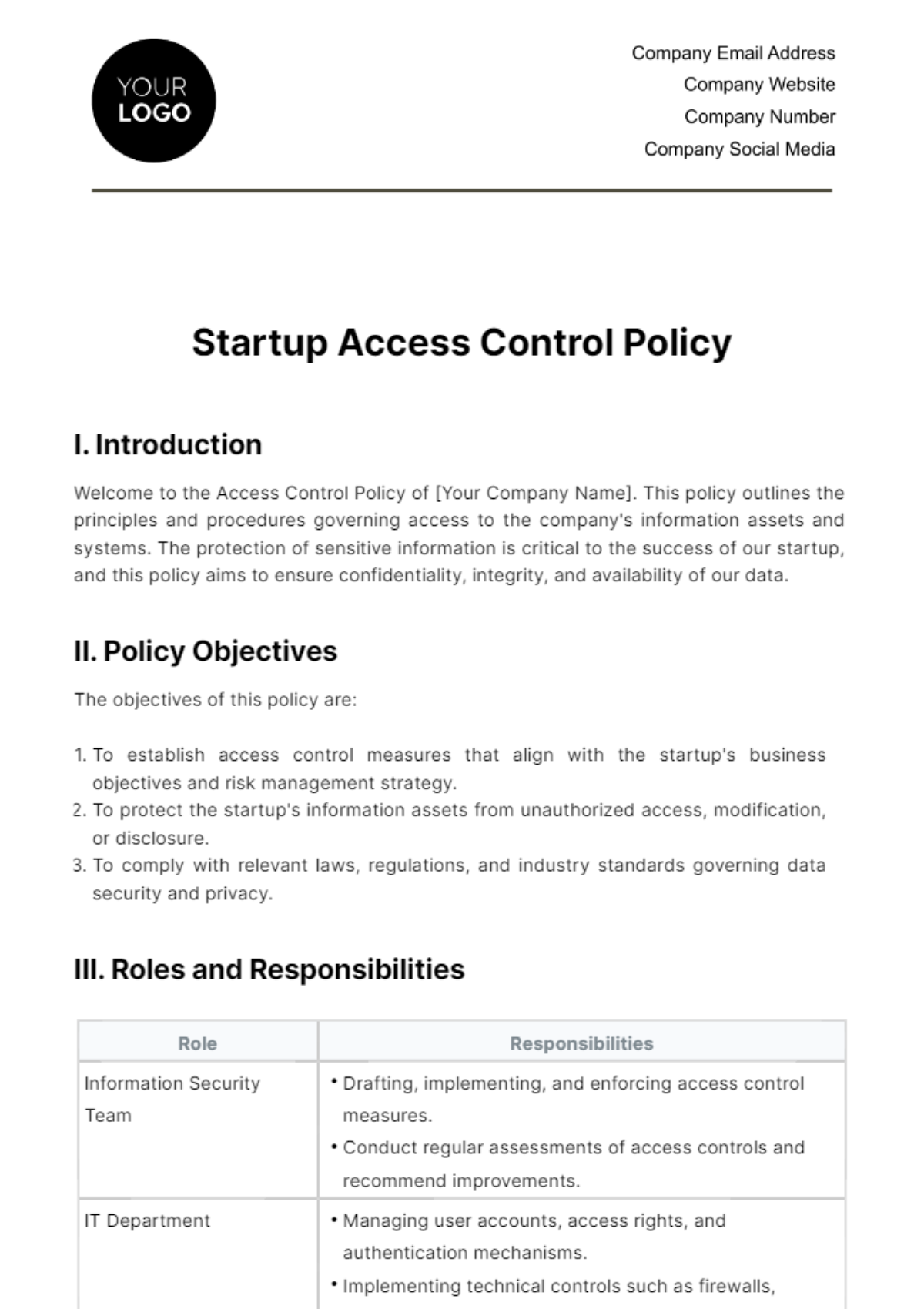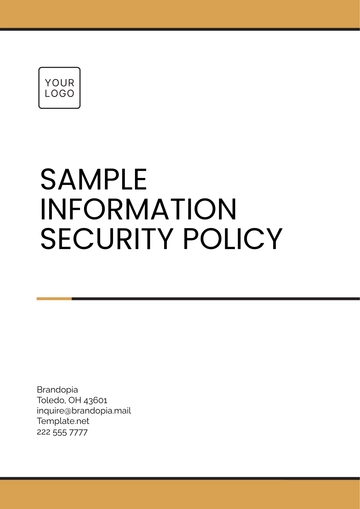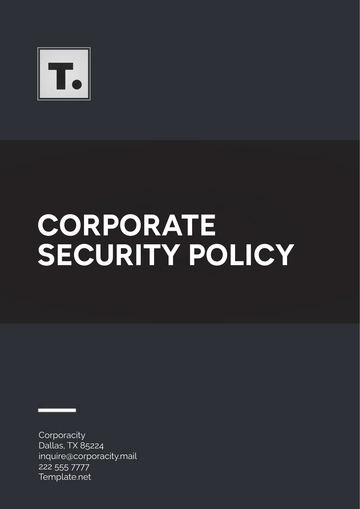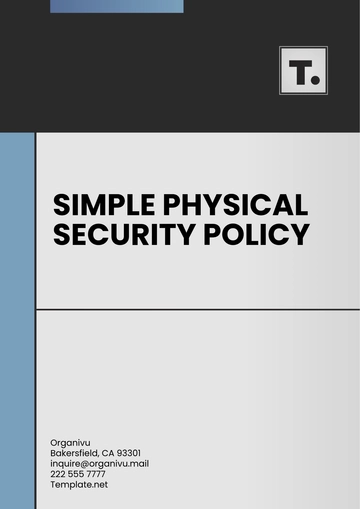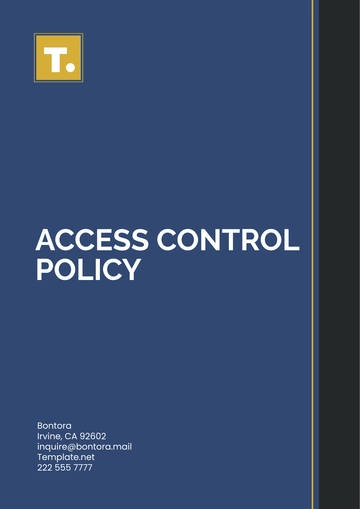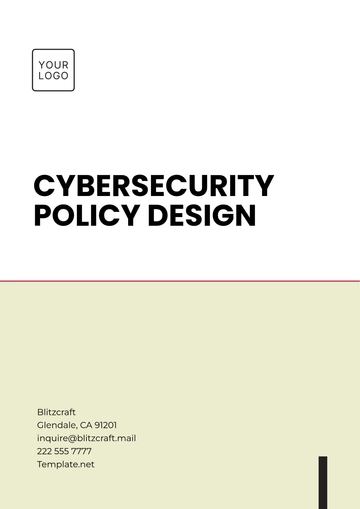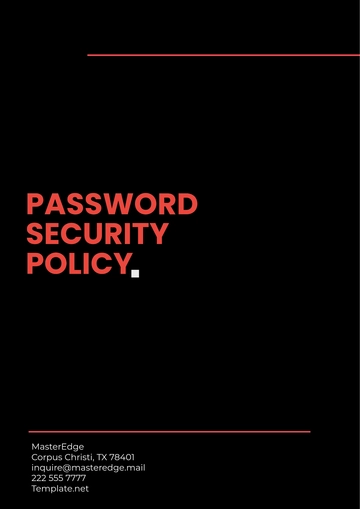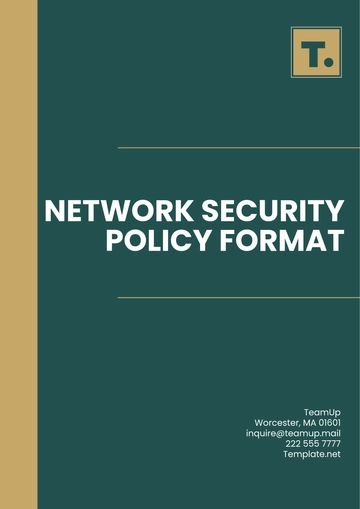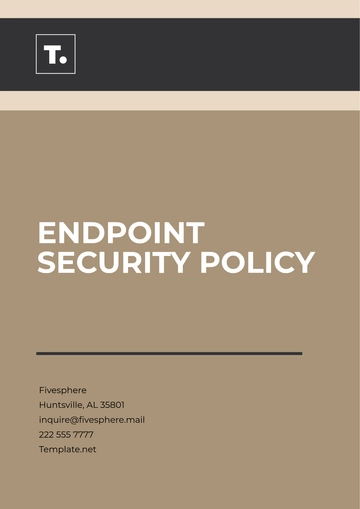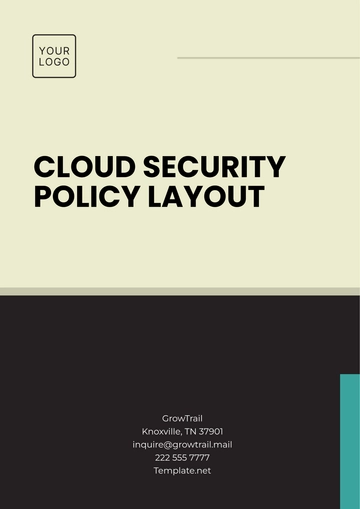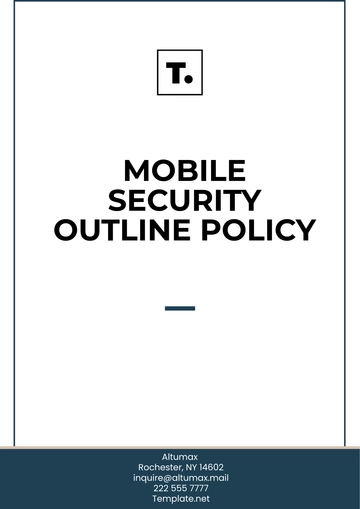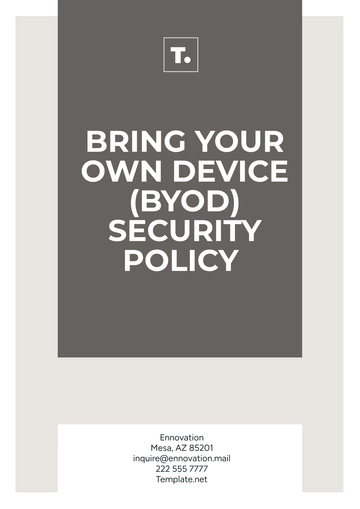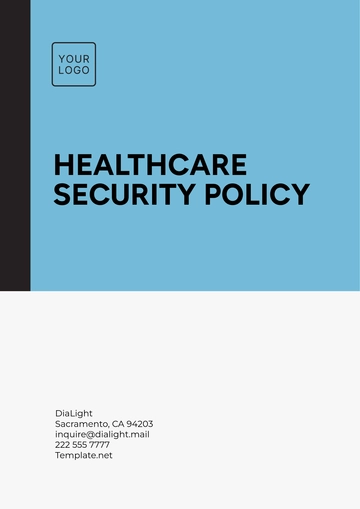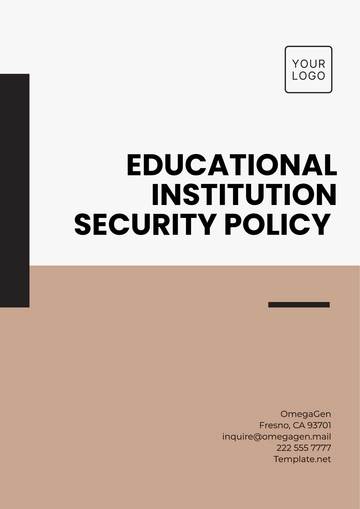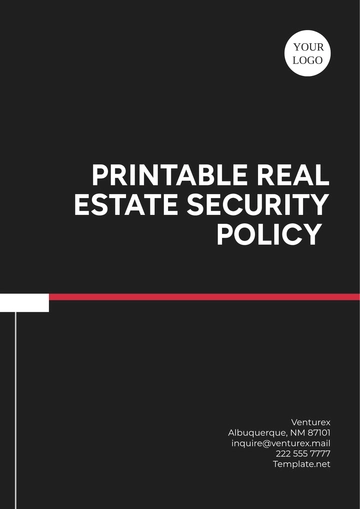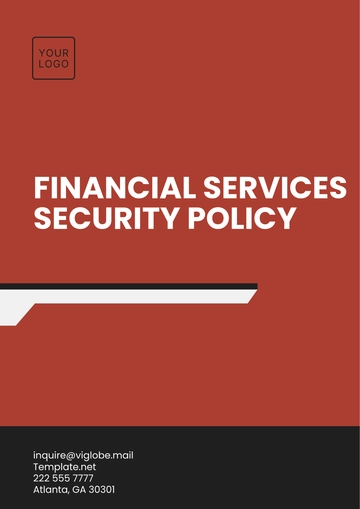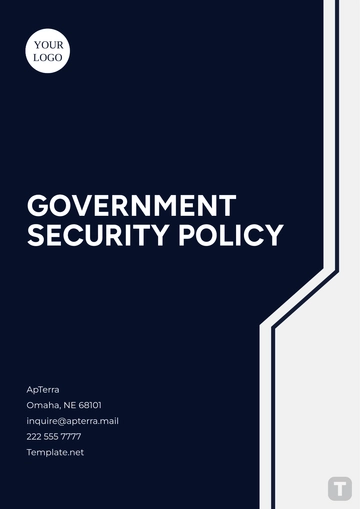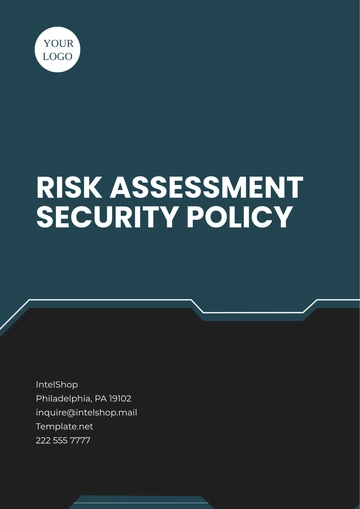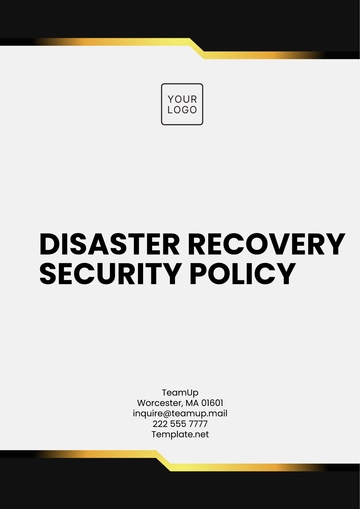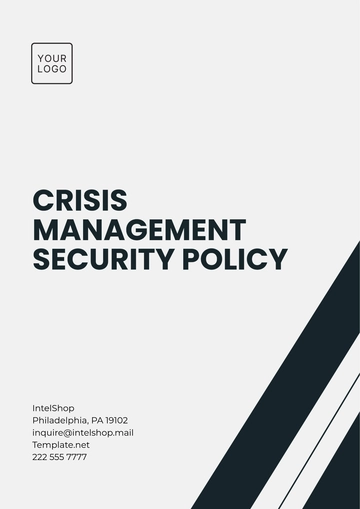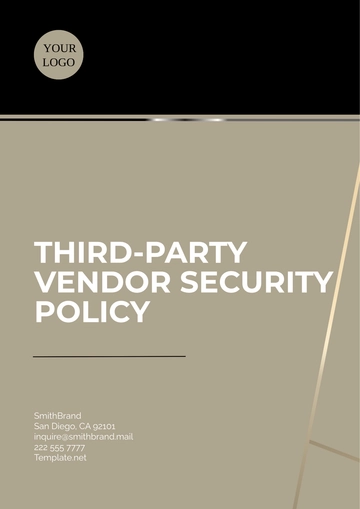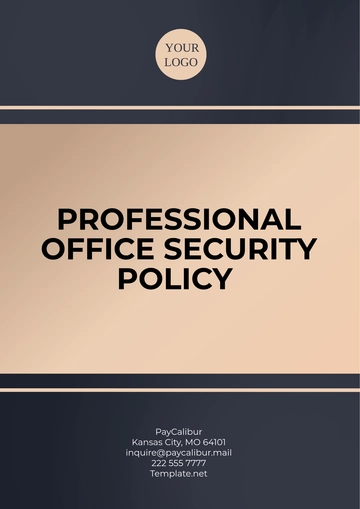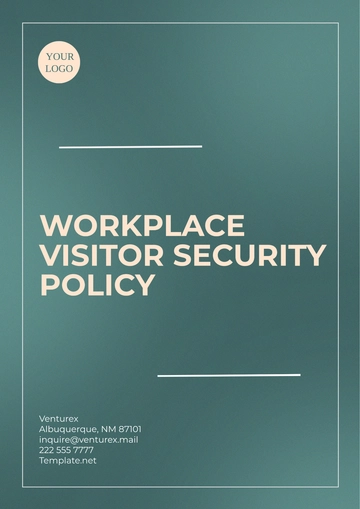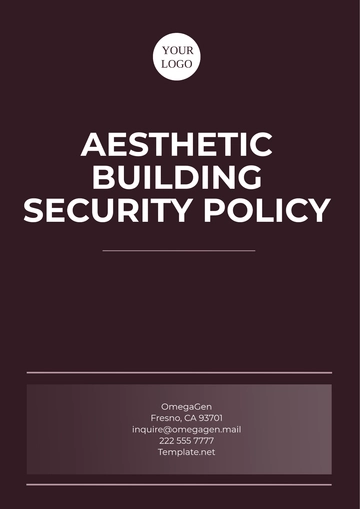Startup Access Control Policy
I. Introduction
Welcome to the Access Control Policy of [Your Company Name]. This policy outlines the principles and procedures governing access to the company's information assets and systems. The protection of sensitive information is critical to the success of our startup, and this policy aims to ensure confidentiality, integrity, and availability of our data.
II. Policy Objectives
The objectives of this policy are:
To establish access control measures that align with the startup's business objectives and risk management strategy.
To protect the startup's information assets from unauthorized access, modification, or disclosure.
To comply with relevant laws, regulations, and industry standards governing data security and privacy.
III. Roles and Responsibilities
Role | Responsibilities |
|---|
Information Security Team | Drafting, implementing, and enforcing access control measures. Conduct regular assessments of access controls and recommend improvements.
|
IT Department | Managing user accounts, access rights, and authentication mechanisms. Implementing technical controls such as firewalls, access control lists, and encryption.
|
Human Resources | Defining employee roles and responsibilities and associated access privileges. Notifying IT of employee status changes (e.g., hiring, termination) for access provisioning or revocation.
|
Legal Team | Ensuring compliance with data protection laws, regulations, and contractual obligations. Providing guidance on legal implications of access control decisions and policies.
|
Executive Management | |
IV. Access Control Principles
Principle | Description |
|---|
Principle of Least Privilege | Access should be granted at the minimum level necessary to perform job functions. |
Need-to-Know Principle | Access to sensitive information should be restricted to individuals who require it for their job duties. |
Separation of Duties | Critical tasks should be divided among multiple individuals to prevent unauthorized actions. |
V. Access Control Measures
User Authentication
Authorization Levels
Definition of user roles (e.g., Administrator, Employee, Contractor) and associated access privileges.
Role | Access Privileges |
|---|
Administrator | Full access to all systems and data |
Employee | Access to company resources based on job role |
Contractor | Limited access to specific systems or data |
Access Control Lists (ACLs)
Implementation of access control lists for file systems, networks, and applications.
Regular review and updates to ACLs to reflect changes in user roles or organizational structure.
VI. Monitoring and Auditing
Logging and monitoring of access attempts, including successful and unsuccessful logins.
Regular audits of user accounts, access rights, and system configurations.
Procedures for investigating and responding to security incidents or violations of the access control policy.
VII. Training and Awareness
Mandatory security awareness training for all employees upon onboarding and periodically thereafter.
Awareness campaigns to promote good security practices and raise awareness of potential threats.
Requirements for employees to acknowledge their understanding and compliance with the access control policy.
VIII. Compliance and Enforcement
Compliance with relevant laws, regulations, and industry standards governing data security and privacy.
Consequences for violations of the access control policy, including disciplinary actions up to termination.
Mechanisms for reporting suspected policy violations or security incidents.
IX. Review and Revision
Annual review and evaluation of the access control policy to ensure effectiveness.
Procedures for updating the policy in response to changes in technology, business requirements, or regulatory requirements.
Documentation of policy revisions and communication of changes to stakeholders.
X. Glossary of Terms
Startup Templates @ Template.net
